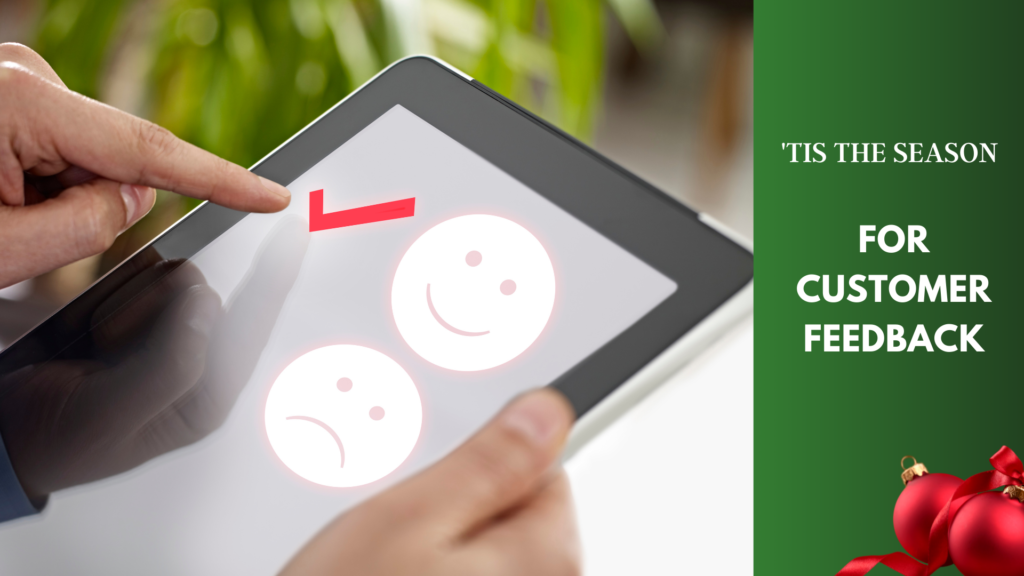Yes, yes, yes, I know that it’s Christmas time and every business is busy with the business of selling, especially given the challenging time that we’re been going through. But, may I suggest that it’s also an ideal time to get some feedback from customers about the quality of the experience they would have received whilst conducting business.
The great brands of this world never miss a chance to get customer feedback and they know that the best time to elicit customer sentiment is in real time, just after the transaction, when the experience is fresh. For the rest of the brands of this world, feedback is only mandatory when there’s a crisis, a new product or service introduction, or when someone says, “It’s been a long time since we got customer feedback.”
The best time to elicit customer sentiment is in real time, just after the transaction, when the experience is fresh.
As a Service Transformation Consultant, I know that triggering customer feedback as a stand-alone activity to satisfy internal curiosity about customer sentiment, is an exercise in vanity if the results don’t convert into actions. Customer feedback should be continuous and part of the overall actionable strategy for building and “sustaining” excellence in delivering successful customer outcomes.
Basically, what I’m saying is that a business should be extracting customer feedback all the time. Doing this some of the time is akin to servicing a vehicle only when the owner hears a worrying noise and then is prompted to seek out corrective measures. If regular servicing of the vehicle is part of the overall strategy for vehicle maintenance, then there’s the possibility of getting ahead of a potential problem and saving money by fixing a problem when it’s the size of a pebble, not when it has become a mountain.
There’s a benefit to using feedback as a mechanism for pre-empting service failure. Firstly, it’s important to know that customers love to give feedback, but they will continue to do so only if their voice is heard and their ideas are converted into action. I remember suggesting to a client of a retail chain that they needed to become highly responsive to the complaints that were being ignored on their social media platforms.
Basically, what I’m saying is that a business should be extracting customer feedback all the time. Doing this some of the time is akin to servicing a vehicle only when the owner hears a worrying noise and then is prompted to seek out corrective measures.
They listened, began to act and guess what happened? There was an immediate doubling of complaints. Of course, in jest, they questioned my expertise and the veracity of my credentials as a consultant. But seriously, their responsiveness triggered customer confidence that complaints were being addressed and so, the platforms converted from complaint channels into resolution channels.
As the season quickens, so too should the effort to tap into customer sentiment. Short surveys that ask about what was good, poor and “improvable” about the current experience, create a data set of views that can prompt quick adjustments to existing shopping or engagement arrangements and improved experiences.
Short surveys that ask about what was good, poor and “improvable” about the current experience, create a data set of views that can prompt quick adjustments to existing shopping or engagement arrangements and improved experiences.
High traffic periods are ideal for trapping customer feedback, especially when customers are either physically in the checkout lines, or shopping online. If the business has an e-commerce service, then the feedback survey can be offered just before checkout. If there’s in-person shopping, a pleasant CSR can either administer the survey or take the customer’s contact information and share the survey within minutes.
Additionally, it’s important to show respondents some love for providing the feedback. How about saying “thank you” with cash back incentives, discount vouchers and shopping points on VIP card? Customers love to receive pleasant surprises and while it’s an act of courtesy to say thank you, it’s a good boost for business when a customer’s effort is rewarded in a meaningful way.
It’s important to show respondents some love for providing the feedback. How about saying “thank you” with cash back incentives, discount vouchers and shopping points on a VIP card?
Now, a business may say that this is too much work to add to its day to day operations. I would agree that it is extra work. However, wouldn’t it be useful to inhabit the minds of customers for a short while and to reap the benefits of thinking like the customer? Would it not make sense to use the extracted intelligence to create a better experience that can generate fewer complaints, less customer irritation and more positive memories that can lead to repeat business?
I think it would be worth every minute of seeing things from the customer’s point of view.

